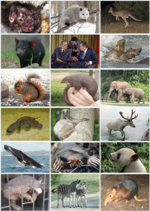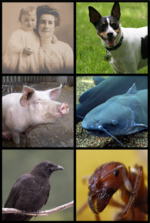behavior in the wild are often controversial. This is distinct from zoopharmacognosy, in which animals ingest or topically apply non-food substances for... 12 KB (1,119 words) - 19:33, 31 October 2023 |
 | Vernonia amygdalina (section Zoopharmacognosy) Vernonia amygdalina, a member of the daisy family, is a small to medium-sized shrub that grows in tropical Africa. V. amygdalina typically grows to a height... 6 KB (700 words) - 09:49, 26 March 2024 |
 | identification of new drug candidates derived from plant sources); zoopharmacognosy: the process by which animals self-medicate, by selecting and using... 14 KB (1,655 words) - 15:36, 16 October 2023 |
 | placenta Trophallaxis: eating food regurgitated by another animal Zoopharmacognosy: self-medication by eating plants, soils, and insects to treat and... 9 KB (892 words) - 14:10, 24 April 2024 |
 | the ice, on the second day his head, and the third his body. Saltern Zoopharmacognosy Bravo, Adriana; Harms, Kyle E.; Stevens, Richard D.; Emmons, Louise... 11 KB (1,154 words) - 07:30, 16 April 2024 |





